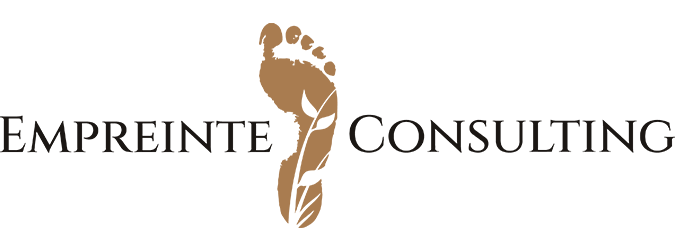Maximizing Fiscal Year-End Giving Strategy
When it comes to maximizing fiscal year-end giving strategy, there is no one best answer to the question of maximizing return, but instead, it might be best to ask yourself a few questions before operationalizing your fiscal year-end efforts.
Is your fiscal year based on the calendar year or some other timeframe?
In the case of every organization where I have worked, the fiscal year is July 1 – June 30. So, you have to ask yourself, do your donors know the importance of these dates as it relates to fundraising results? There may be a need to explain the importance of June 30 from a fundraising perspective, leading up to and as part of your fiscal year-end strategy and effort.
Do you have a compelling message?
My background is educational fundraising, and it has always been my belief that a compelling message, in this environment, includes impact-producing stories from those who benefit most from gifts. For instance, does your organization have a signature program or unique opportunity for which a short video, action photo with an accompanying pop-out quote or link to more information would make a case for support?
How will you transmit your message to donors?
The previous question makes the answer to this question very clear. You must consider transmitting your message and requesting support in as many ways as possible. An ‘old-fashioned’ letter is a great start, but what about email, social media, text-to-give, and any other tool that helps bring your story to life?
Who are your donors, and what is the best strategy for each group?
Having a good understanding of your donors and their giving habits can make a big difference in your success. Categorize your donors based on their connection to your organization and giving history to tailor your approach. Start with LYBUNTS, who have given before and know your mission. Some may not realize they’ve lapsed, so personal outreach can encourage them to stay loyal and consistent.
Next, for a large group of SYBUNTS, consider sorting them by dollar range to prioritize outreach if resources are limited. Highlight new programs and share success stories since their last donation while emphasizing the importance of renewing their gift this year.
Do you have a list of individuals who have engaged with your organization but never donated? These ‘never-donors’ are familiar with your organization, making them prime candidates for conversion. Once they donate, focus on renewing their support in future years.
Will personal outreach be meaningful at fiscal year-end?
The 3 C’s of fundraising—commitment, connection, and capacity—are crucial. For constituents who showed these traits previously but not this year, a personal touch might make a difference. This approach can be time-consuming and may not work for every organization due to staff limitations. Therefore, understanding your constituents and their key connections within your organization is essential for success in your fiscal year-end strategy.
Get creative with your approach.
If resources are limited, engage the board in personal outreach by organizing a phonathon and asking them to call prospective donors.
Consider asking a current donor to create a challenge grant fund up to a specified amount. Encourage donors to make their fiscal year-end contributions, knowing that their gifts will be amplified by the challenge fund.
Request a specific, reasonable amount of donation and clearly explain the purpose of the request. Donors may respond if the request is reasonable and the goal is clear and meaningful.
What options do we have for donors to make their gift?
The traditional giving methods, check, ACH, online, etc., are always a go-to for most donors, however, I believe that all organizations have to consider other options as well. At a former institution, we implemented a text-to-give feature several years ago. At first, it seemed useful for special events, but as promotion increased and donors became accustomed to this giving option, it evolved into a tool for giving at any time. About three years ago, we also added the ability to give via cryptocurrency. This option has not taken hold just yet, in the case of my previous organization, but digital wallets are becoming a game-changing payment option, so the ability to make a crypto transaction is going to increase your chances of attracting donors who are comfortable in this space.
Does your fiscal year-end strategy include a thank-you message strategy?
A crucial donor retention step is thanking donors for their gift, regardless of when the gift is made. However, for donors who stepped up and responded to your fiscal year-end appeal, a thank you is even more important.
It was always our best practice to:
- Ensure that donors are promptly thanked following their donation. Create a thank-you page on your website for online contributions and include a thank-you message in your automated donation confirmation.
- Send a detailed thank-you message within 48 hours of receiving each donor’s gift. Utilize this opportunity to emphasize how their contribution will support your objectives and advance your mission, and help reach the fiscal year-end goal!
- Personalize thank-you messages with a special note from a constituent who benefits from the gift, your CEO, or board chair. Be sure to include the donors’ names and mention their donation amount.
- Consider hosting an event to conclude your end-of-fiscal-year fundraising efforts and express gratitude to supporters in person. This also presents an excellent occasion to share results and show how their gift was impactful and meaningful.
The strategies for fiscal year-end success are infinite, and your non-profit will find success if you follow these three key points:
- Have a well-thought-out plan that is well-polished in advance
- Set reasonable and achievable goals
- Define your target audience(s) and have a compelling message
Need help? Your team at Empreinte is ready to assist your non-profit with strategy and execution. Learn more about all the ways we can help at https://empreinteconsulting.com/services/.
✍ Written by: Brad Schreiber, Senior Advisor




